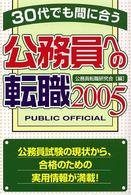Full Description
The focus of Volume I of the Handbook of Human Brain Function was on basic scientific principles of brain imaging as it relates to the study of human brain function. Once the scientific bases for a particular discipline are established, follow. Such is the status of brain imaging in the study of clinical applications human brain function. It is of interest to note that the 1952 Nobel Prize for Physics was awarded to Felix Bloch and Edward Purcell, who discovered that nuclei precessing in the radiofrequency range could emit a radiofrquency signal detected by a radio receiver. Their findings initiated a series of very basic re search studies on the characteristics of nuclear magnetic resonance. It would take over 25 years of basic research before findings began to point toward truly biomedical applications. However, once realized, clinical applications became standard fare for nuclear magnetic resonance. The example of Bloch and Pur cell's work in an area of very basic science expanding to clinical application has been repeated throughout the medical and neurological sciences. This type of progress is what drives science. As a benefit from these scientific advances, research, clinical, and diagnostic imaging from a variety of modalities, not just computerized tomography or magnetic resonance imaging, can be performed. This volume focuses on the clinical applications of various neuroimaging meth ods. Chapter 1 introduces the topic of clinical neuroimaging in the study of human brain function.
Contents
1 Introduction.- I General Issues.- 2 Neuroimaging, Neurophysiological, and Neurobehavioral Techniques: A Beginning Synthesis.- 3 Neuroimaging in Neurological Disorders.- 4 Neuroimaging in Psychiatric Disorders.- 5 Gender Differences in Brain Morphometry and Function.- 6 Neuroanatomy of the Aging Brain Observed in Vivo: A Review of Structural MRI Findings.- II Clinical Syndromes.- 7 Positron Emission Tomography Neuroimaging in Dementia.- 8 Functional and Structural Measures for Determining Risk Memory Change following Epilepsy Surgery.- 9 Imaging Functional Reorganization after Brain Injury.- 10 Neuroimaging and Traumatic Brain Injury.- 11 Magnetic Resonance Imaging and Memory Disorders.- 12 Functional Magnetic Resonance Imaging: Studies of Cognition.- 13 Functional Magnetic Resonance Imaging Studies of Memory.- III Future Direction And Clinical Application.- 14 Neuroimaging and Biology: Concluding Remarks.








